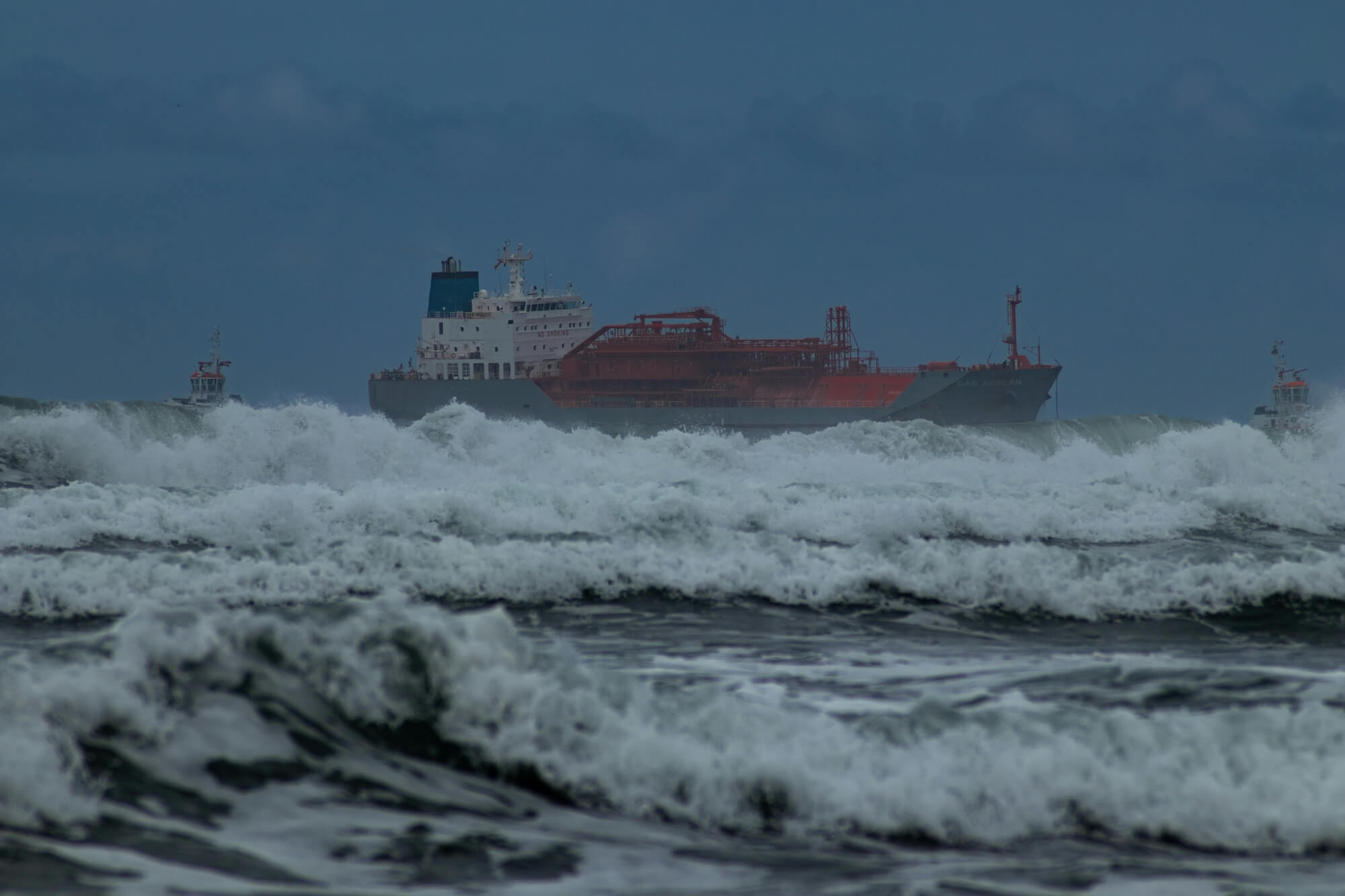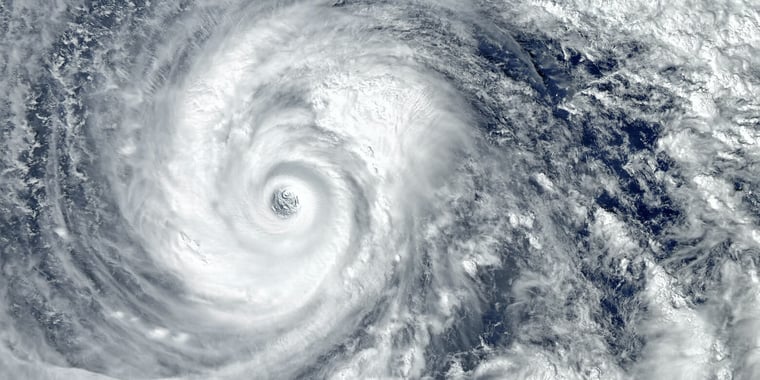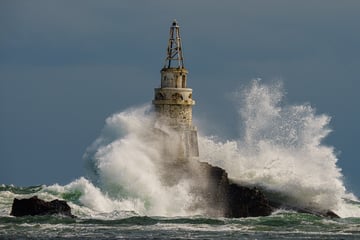Tropical cyclones are major threats over the Earth’s oceans in the tropical or sub-tropical regions. Although they are relatively rare, they are able to create extremely dangerous situations for maritime operations. In light of the current climate crisis, it is crucial to examine the impact of climate change on the frequency and intensity of these violent storms.
Before we explain the effect of climate change on the development of tropical cyclones, let's define what they are and identify the necessary ingredients for their formation.
Tropical cyclones are observed in many tropical and subtropical regions across the world. They are known as hurricanes in the North Atlantic, the central North Pacific and eastern North Pacific. In the South Pacific and Indian Ocean they are called cyclones, while typhoons develop over the Northwest Pacific basin.
Multiple ingredients are required for the formation of a tropical cyclone. They are fuelled by warm ocean water of 27 degrees Celsius or higher and moist air. Additionally, there should be minimal difference in wind speed and direction at various levels in the atmosphere, known as vertical wind shear. High vertical wind shear can disrupt the cyclone's structure, hindering their further development. Moreover, a trigger, such as a cluster of thunderstorms, is necessary. A perfect combination of these ingredients results in the formation of the 'perfect' storm.
Will we see more tropical cyclones in the future due to climate change?
Since the early 1990s, we have observed more active cyclone years. Despite increasing tropical cyclone activity in recent years, there is no consensus among climate scientists on whether the frequency of tropical cyclones is actually increasing over time due to human-induced climate change (Sobel et al., 2021). In fact, several studies suggest that the number of tropical cyclones may decrease or remain unchanged in the future (Walsh et al., 2015). Basically, we can just say that we don’t know at this time. Tropical cyclone development depends on numerous factors within the Earth’s system, making it a challenging area of research. Nevertheless, it remains an active field of study, and hopefully, more understanding will emerge in the near future.

Will tropical cyclones become stronger?
The simple answer is: yes. One of the most well-known effects of climate change is the increase in global temperature. This increase would be much higher if it weren’t for the large heat-storage capacity provided by our oceans. The oceans partly 'capture' the increased heat input in the Earth's atmosphere. So, the oceans are warming as well. This results in more energy available to fuel tropical cyclones. Furthermore, warmer oceans lead to more evaporation of water, which is stored in the atmosphere as warmer air can hold more water vapor. The combination of warmer oceans and more moisture in the air is expected to result in stronger cyclone winds. A larger proportion of the storms that develop will reach intense levels (e.g., category 4 or 5 in the case of hurricanes; Seneviratne et al., 2021). However, it's uncertain whether these storms will also increase in size. There is still uncertainty regarding how the size of tropical cyclones will change in the future. They already vary a lot in size from one to the other and from basin to basin, despite their strength.
In addition to cyclones becoming stronger, they’re also expected to intensify more rapidly in a changing climate. When storms strengthen more quickly, it becomes harder to predict how intense their impacts will be. This amplifies their threat, as there may be reduced time for preparation and evacuation.
Flooding presents another significant threat during tropical cyclones. Warm air can hold more water vapor, resulting in increased precipitation potential. On average, rainfall rates are expected to increase by 10-15% based on a 2 degree Celsius global temperature increase (Seneviratne et al., 2021). Furthermore, tropical cyclones are projected to move slower in certain regions, particularly around the mid-latitudes (Zhang et al., 2020). The increased rainfall is expected to result in more precipitation being deposited over a particular area, heightening flooding risks. Storm surge is another major cause of flooding during tropical cyclones. Back in 2005, hurricane Katrina produced a storm surge reaching heights of just over 8 meters, penetrating 10-20 km inland and inundating much of the coastal areas of Southeast Louisiana and Mississippi. As sea levels are expected to rise in the coming century, storm surges like these are expected to become more damaging, especially for low-lying coastal areas.
Also read: How we do wave modeling
What does this mean for your offshore and port operations?
Tropical cyclones can have a massive impact on operations in coastal areas or further offshore. The shipping industry can experience disruptions across their entire supply chains as vessels navigate adverse weather conditions by making detours or seeking shelter in nearby ports. This also affects several related industries, such as logistics and manufacturing, indirectly impacted by the cyclone. The anticipated changes in cyclone strength, development rate, and motion speed may influence how we attempt to mitigate the damaging effects of these storms on the shipping industry.Ports, in particular, are highly vulnerable to tropical cyclones. High wind speeds and storm surge pose major threats to ports, given their sea-level location and infrastructure comprising high buildings, structures, and cranes. Ports must close as tropical cyclones approach, leading to significant economic damages due to halted operations, in addition to possible structural damage caused by the cyclone itself. In a changing climate, the expected increase in cyclone winds and more damaging storm surges may lead to escalating structural and economic damage in the future.
Tropical cyclones also pose threats to oil platforms and offshore wind farms. Oil platforms are susceptible to structural damage from high wind speeds, while offshore wind farms, crucial for future renewable energy production, face downtime during tropical cyclones to prevent damage to generators. The typical wind speed range for wind turbine power production is roughly between 3 to 25 m/s. At higher wind speeds, during a tropical cyclone, generators are forced to stop to prevent damage. Stronger and slower-moving storms may lead to more downtime for offshore wind farms in the path of a violent storm, increasing the risk of decreased energy production (Mattu et al., 2022).
Conclusion
The complex interplay between climate change and tropical cyclones presents significant challenges across various sectors within the maritime world, from shipping to offshore energy production. As cyclones become more intense and unpredictable, effective mitigation strategies and adaptation measures are crucial to minimize the economic and structural impacts on vulnerable coastal and offshore industries.
Want to know more?
At Infoplaza, a dedicated weather room with experienced marine meteorologists is ready to support your offshore operations, 24/7. Along with our Marine Weather Dashboard, you always have access to the most expert view on weather situations, so you can excel at decision making. 



